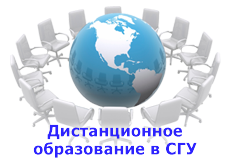- Dmitry E. Postnov, Saratov State University (Russia)
- Elena S. Stukhina, Saratov State University (Russia)
- Alexander Neiman, Ohio University, USA
- Olga Sosnovtseva, University of Copenhagen, Denmark
- Oxana Semiachkina-Glushkovskaya, Saratov State University, Russia
- Anatoly Skripal, Saratov State University, Russia
- Boris Bezruchko, Saratov State University, Russia
The main goal of the Conference is to provide the platform for discussion of the listed topics in the framework of Saratov Fall Meeting with special attention to task-specific, rather than generic aspects. The later mean that the contributions based on experimental studies showing the need for computational support are also appreciated.
The mathematical modeling and numerical simulation are the powerful tools for modern research. Together with advanced techniques of experimental data analysis they provide a solid computational basis for both experimental and theoretical studies in biophysics and medicine.
Recently introduced term "Biosimulation" incorporates the variety of mathematical modeling approaches and techniques and becomes the powerful tool for biomedical research and drug development. It implies different modeling levels ranging from phenomenological one to detailed description of biochemical processes and used both to reveal some basic physical mechanisms and to predict the quantitative features of processes in living systems.
The rapid development of optical and non-optical techniques for visualization and measurement results in considerable increase of attributed flows of raw data. Thus there is the need for continuous grows of capability of data processing, both quantitative (computational performance) and qualitative (adaptive and problem-specific data pre-processing). The GPU (graphics processor unit) based techniques of parallel computing becomes the popular solution providing the high performance at reasonable costs. However, it requires the adaptation of existent and the development of new computational algorithms for filtering and spatial-temporal patterns detection.
The advanced data processing is now capable to provide the insight in structural features of source system, such as interaction of internal rhythms, coupling between system components, or casualty of events. In this field, the development, validation and application of both temporal and spatial complexity measures is highly relevant, such as multimodal wavelet analysis, chirplets, fractality measurement, etc.
The scientific program will include but is not restricted to the following topic areas:
- Mathematical Modeling of Biochemical and Physiological Processes
- Advanced Time Series Analysis for Biomedical Applications
- Computational Neuroscience
- Dynamical Patterns in Experimental Physiology
- GPU Computing in Processing of Biomedical Data
- Complexity measures, coupling and rhythm detection techniques







